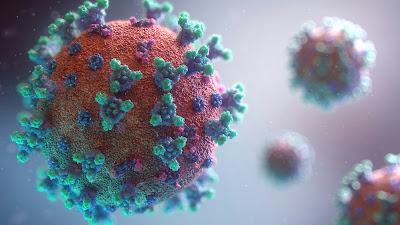UK scientists have recently developed a DNA sequencing program to identify bacterial infections faster and more precisely. Results can be delivered within 48 hours, a significantly quicker turnaround time than traditional methods which take anywhere between 4-8 weeks.The breakthrough can help stem the rise of superbugs by accurately determining the bacteria that cause infections and prescribe the appropriate antibiotics that will work best. Innovative solutions like this are crucial in the fight against superbugs and viruses, deemed as top public health concerns by the World Health Organization (WHO). But, what are the latest developments in the war against superbugs and viruses? Is the world doing enough to stop the global proliferation of superbugs and viruses?
Hospital Infection Control Programs
Antimicrobial resistance (AMR) is an important concern in public health directly causing 1.27 million global deaths in 2019 per WHO reports. In addition to the ‘misuse and overuse of antimicrobials', ensuring patient safety and maintaining a healthy environment for both patients and healthcare staff are critical. Hospitals are high-risk environments for infections because of the concentration of sick patients, medical procedures, and the potential AMR pathogens. Therefore, cleaning and disinfection of surfaces and equipment in hospitals prevent the spread of infections that can be transmitted through contaminated surfaces or equipment.
For example, hospital floor cleaning is essential to prevent contamination, protect vulnerable patients, and promote a clean environment.
Significant advancements in hospital cleaning include automated cleaning robots, smart disinfection technologies, and artificial intelligence (AI)-powered cleaning management systems. Furthermore, hospitals use a combination of chemical disinfectants that are effective against different pathogens and ultraviolet (UV-C) light to kill bacteria, viruses, and spores. The first global report by the WHO revealed that good infection prevention and control (IPC) program have an effect on infection prevention. For example, good hand hygiene and other practices can prevent 70% of infections. Hence, a strict cleaning and disinfection protocol is critical in preventing transmission of superbugs and viruses.
Addressing AMR
The problem of superbugs is compounded by the overuse and misuse of antibiotics in both human and animal populations. Limited access to quality healthcare in many regions all over the world often leads to inappropriate administration of antibtiotics or absence of proper supervision. Although there is a global push to raise public awareness of the danger of antibiotic resistance and the dangers it poses, its scale and effectiveness differ depending on the reagion, public health initiatives, and healthcare infrastructure. On top of global campaigns and initiatives, national action plans also include strategies to enhance awareness, regulate antibiotic use, and improve infection control practices. Pharmaceutical companies work as well with governments and international organizations to raise awareness and fund research into new antibiotics and alternatives.
Unfortunately, even though the number of antibacterial agents developed between 2021-2023 increased from 80 to 97, only 12 are considered genuinely innovative according to the WHO. One of these is 'cresomycin', a synthetic compound developed by Harvard researchers. It destroys many strains of drug-resistant bacteria including Staphylococcus aureus and Pseudomonas aeruginosa, commonly found in chronic-infected wounds.
Its results are impressive achieving a 100% survival rate in treated controls (mice) compared to 90% mortality in untreated subjects. Novel treatments such as darobactin D22 also show effectiveness against gram-negative pathogens. These include E.coli, Klebsiella pneumoniae which causes penumonia, urinary tract infections, and bloodstream infections, and salmonella responsible for causing gastrointestinal infections. Another novel therapy is bacteriophage treatment that targets and destroys bacteria. Immunotherapeutics are another powerful treatment against resistant bacteria by enhancing the body’s natural defenses.
Viral Treatments
For many viruses, vaccines are powerful and effective tools. Take the example of the global response to COVID-19 which saw a remarkable speed in vaccine development. However, not all viruses have vaccines and sadly, global vaccine distribution remains skewed. Researchers though are exploring compounds that can attack multiple viruses simultaneously to create treatments against viral pathogens.
Clustered regularly interspaced short palindromic repeats or CRISPR for short is a technology that selectively modifies the deoxyribonucleic acid (DNA) of living organisms.
To illustrate, CRISPR technology has demonstrated effectiveness in blocking the SARS-CoV-2 virus when delivered intravenously in the animal’s lungs, a treatment that could be used as a COVID preventive measure. Scientists are also exploring the use of CRISPR in editing the viral DNA of HIV patients.
In conclusion, while the world has taken gargantuan steps to combat superbugs and viruses, these endeavors are costly and require global cooperation, better public health infrastructures, and increased funding. Significant progress is possible, but there is still much work to be done in response to the challenges posed by superbugs and viruses.






.JPG)





0 Comments